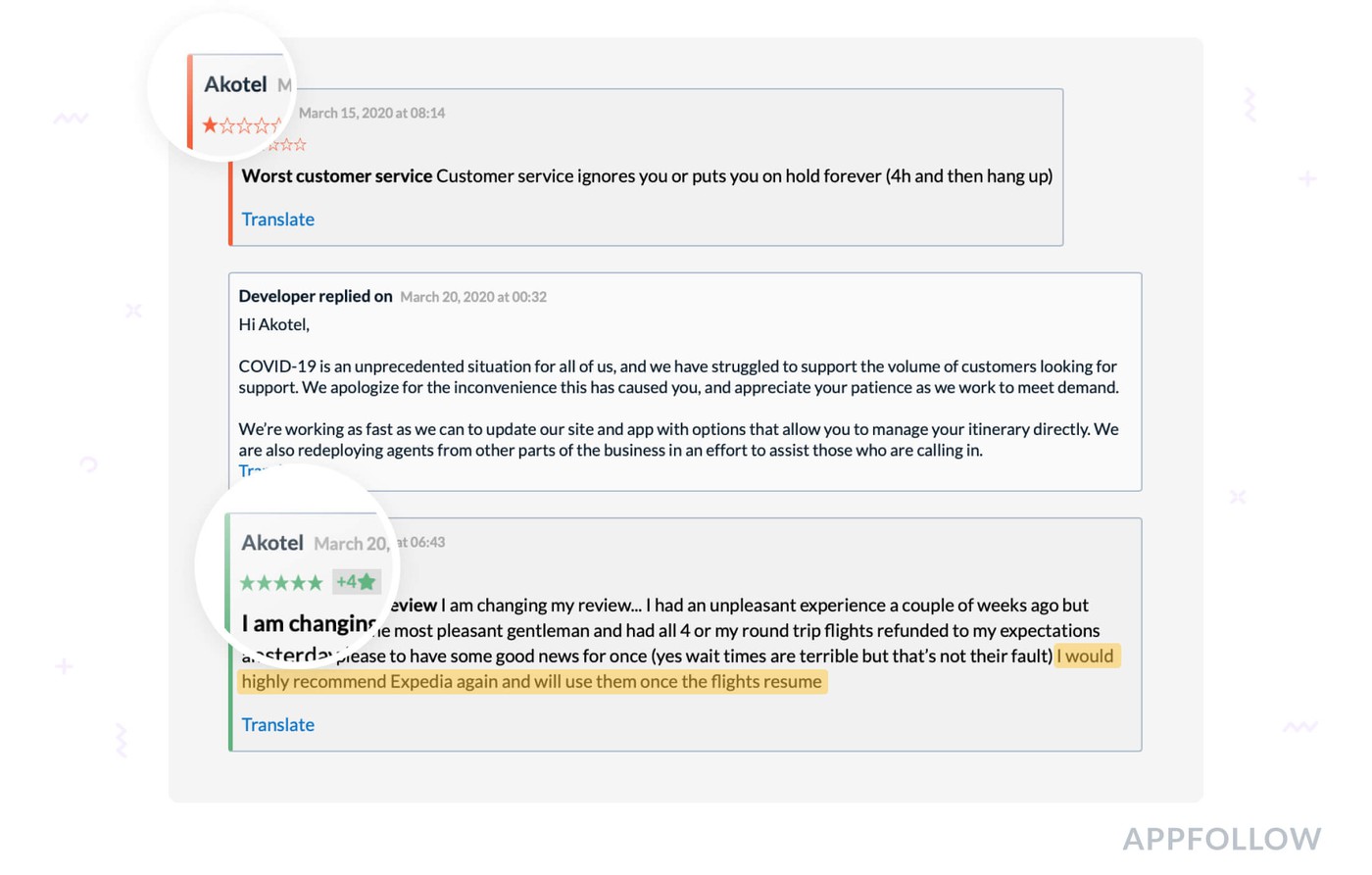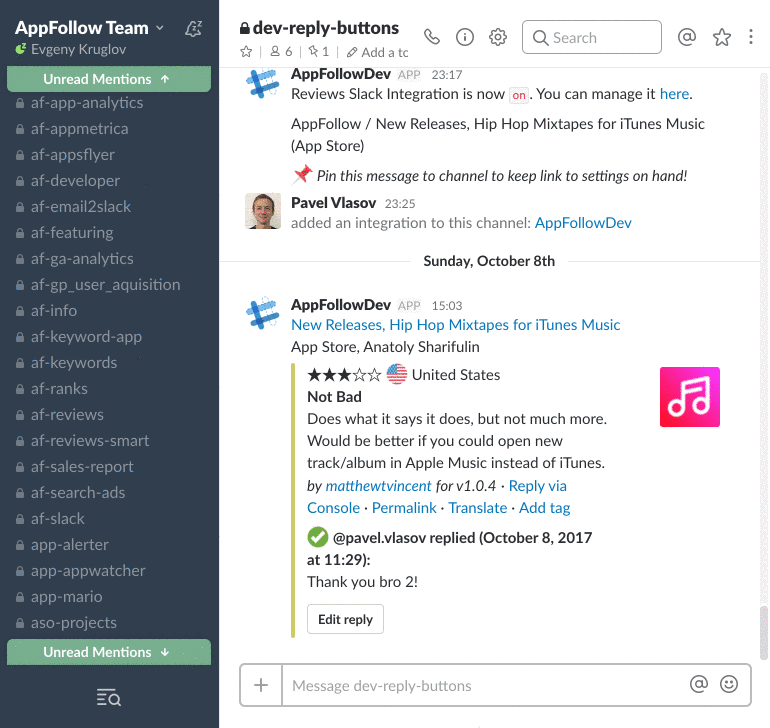How to optimize review management: the guide

Working with customers feedback is fairly considered as an important part of the product development strategy. Answering the question of how to see Google Play reviews in other languages and working with them helps in understanding your products' strongest & weakest parts so you can emphasize the first & improve the latter. We've covered the basics of reputation management in our awesome guide here, in case you'd like to know more.
For quite a long time when talking about customer development for mobile apps, most comments were referring to Google Play as it was the only store to provide native answers to user reviews. If you were developing an iOS app, you had to implement some extra SDKs to collect & manage customers' feedback.
Luckily Apple finally introduced to developers the ability to answer user reviews via iTunes Connect in 2017. And now they can take full advantage of this feature in both stores.
Responding to app reviews can serve a lot of purposes:
- A dialogue with your users turns them into loyal customers.

- When you follow up negative reviews they are very likely to turn into positive ones.

Our observations show that significant number of users who received a prominent and informative answer to their negative review tend to change it to a positive one within day or two.
- When deciding either to install the app or not, users tend to trust those apps who have developer’s answers in the Reviews section.
The only problem with answering reviews nowadays is that it’s a complicated process as you have to access two different systems simultaneously — iTunes Connect & Google Play Console, which implies the extra necessity to manage access to them if you have more than 1 person to work with your users.
It also complicates analysis of customer sentiment as you can’t do a cross-search or work with both app stores at the same time.
demo_cs_efficiency
One of the ways to optimize your app store review management is to transmit them into a third party system which provides extra options that native dashboards don't have.
Slack is one of the most popular systems, as it allows you to simplify reviews management & gives access to them for everyone on the team & not only to those who have iTunes Connect or Google Play accounts.
And, of course, it’s not only convenient to track reviews in Slack but to answer them as well. AppFollow’s Reply bot is a convenient tool to monitor & answer reviews in Slack.
With AppFollow you can aggregate reviews for both iOS & Android apps in one feed and reply to reviews from both app stores.

To set up Reply bot, you need to link your iTunes Connect or Google Play accounts with AppFollow. You’ll be able to manage reviews from the web dashboard as well (it provides few extra options like reviews tagging or export). Team plans to add these features to Slack bot in the near future.

This approach gives you several benefits:
- No more problems with iTunes Connect or Google Play account management — instead, you manage channels in your team’s Slack.
- You track reviews from both stores at once — this saves a lot of time so you can better understand & analyze users sentiment.
- You manage reviews answers from one place & customer support can be easily done by anyone in the team.
So, Slack proved to be a convenient & neat team communication tool to operate external services. AppFollow has been managing integrations with Slack for two years already, allowing developers to track all kinds of data from app stores. Reply bot feels like a natural evolution for their service.
Afterword
If you do want to optimize your reviews management for App Store & Google Play, set up AppFollow’s Slack Reply bot now. It’s easy! ✌️
Also, you here can find other third-party integrations for app ratings & reviews. All there to help you know how to see Google Play reviews in other languages, as well other platforms.
signup_boosting
FAQ
How can I localize my app for Arabic-speaking users in the App Store?
Wondering how to see Google Play reviews in other languages? Localize your app for Arabic-speaking users, start by translating your app's interface and store page into Arabic, considering it's written from right to left. Use tools like Google Translate for initial translations, but ensure accuracy by testing keywords and phrases directly in the App Store. Include popular local search terms and consider cultural nuances.
What are the challenges of seeing Google Play reviews in other languages?
Viewing Google Play reviews in languages other than your own can be challenging due to language barriers. To overcome this, you can use Google Translate or other translation tools to understand the content. However, for a more nuanced approach, especially when localizing apps, employ native speakers or professional translation services.
Is it important to use local keywords in app localization?
Using local keywords in app localization helps reflect the actual search behaviors and language nuances of the target market, such as Saudi Arabia. Keywords optimized for local preferences increase your app's visibility in search results. For instance, a direct translation might not use terms that potential users are searching for. Conduct thorough keyword research using tools that track local search trends for successful App Store Optimization in any language.






